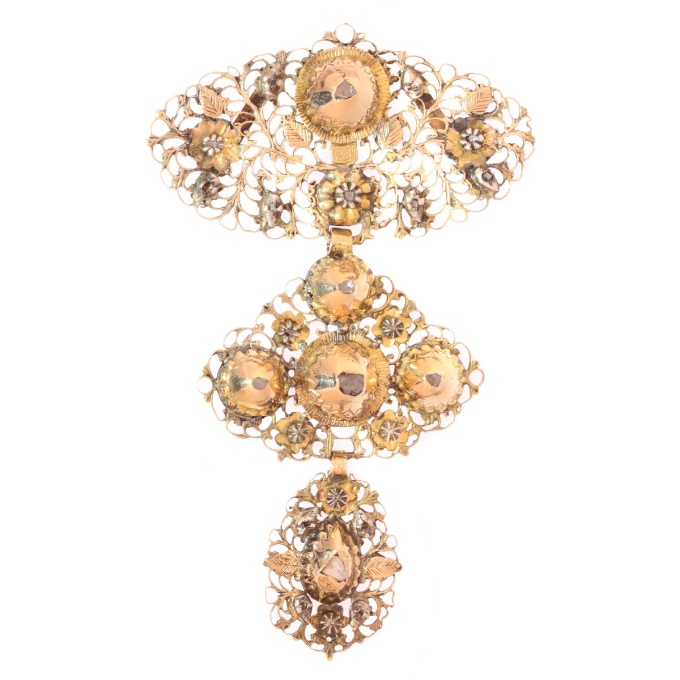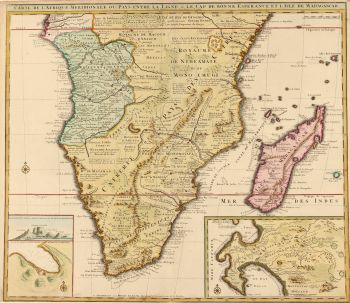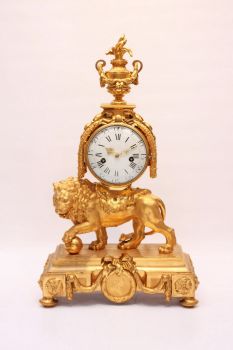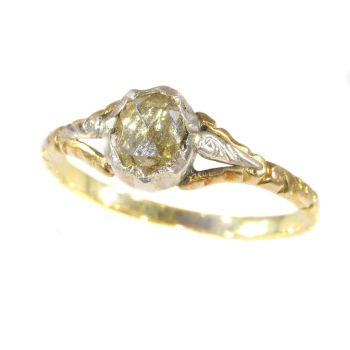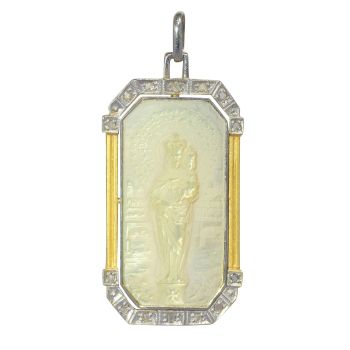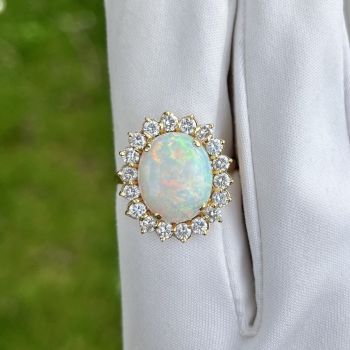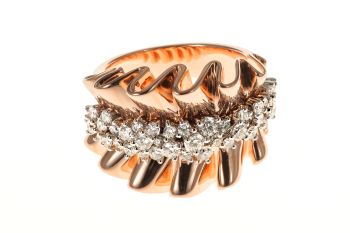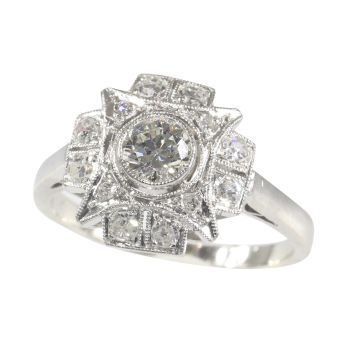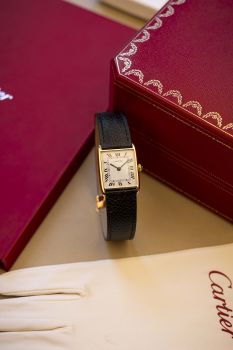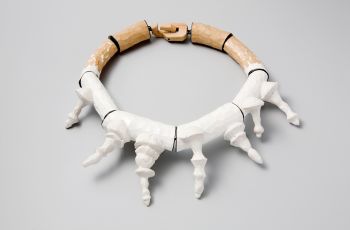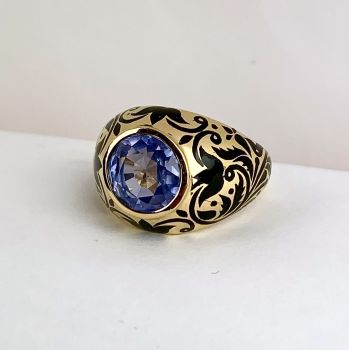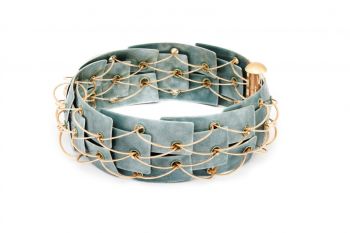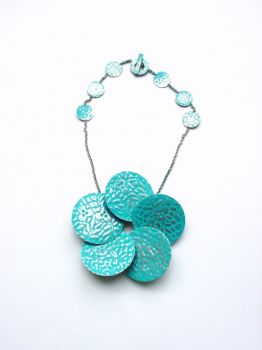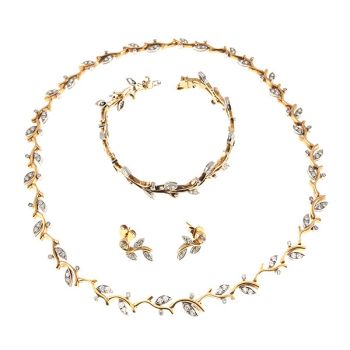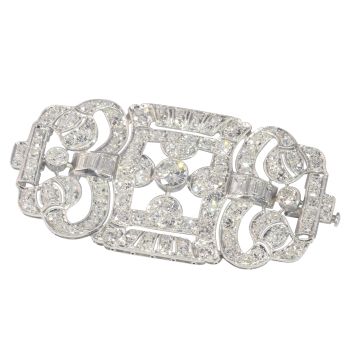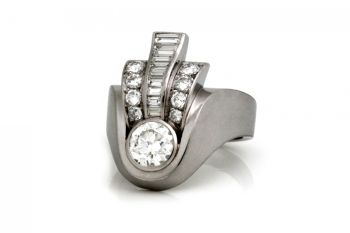Pingente de diamante de ouro do início do século 19 chamado de la jeanette 1820
Artista Desconocido
DiamanteOroPiedra preciosa
Actualmente no disponible a través de Gallerease
- Sobre la obra de arte
The filigree frills of this 18K yellow and red gold Georgian pendant from 1820 guide you through a heart-shaped surmount and a twofold Latin cross depicted by four senailles in a domed foil setting. This typical Belgian adornment, called a croix "à la Jeanette", exudes heritage and romance through the senaille-embellished roses and petals scattered over the ethereal curls.
Antique jewelry object group: pendant
Condition: excellent condition
- (more info on our condition scale)
Country of origin:Although it does not carry any legible control marks we believe this to be of Belgian origin.
Style: Georgian - Georgian style is the name given in most English-speaking countries to the set of styles current between 1720 and 1840. It is eponymous for the first four British monarchs of the House of Hanover—George I of Great Britain, George II of GreatBritain, George III of the United Kingdom, and George IV of the United Kingdom—who reigned in continuous succession from August 1714 to June 1830.
- See also: Georgianor more info on styles
Period: ca. 1820
- (events and facts in 1820)
Source of inspiration: Christianity
Theme: Cross - The word cross was introduced to English in the 10th century as the term for the instrument of the torturous execution of Jesus (gradually replacing the earlier word rood), ultimately from Latin crux, via Old Irish cros. The word can nowadaysrefer to the geometrical shape unrelated to its Christian significance. The Latin Crux (translating Greek stauros) was a Roman torture device used for crucifixion.
Material: 18K bi-color (yellow and red) gold
- (more info on precious metals)
Technique: The rose cuts are set on foil. This is a special technique that was used to bring the lustre of the diamonds to its best quality.
Filigree (formerly written filigrann or filigrane) is a delicate kind of jewel work made with twisted threads usually of gold and silver or stitching of the same curving motifs. It often suggests lace and French from 1660 to the late 19th century. Itshould not be confused with ajoure jewellery work; while both have many open areas, filigree involves threads being soldered together to form an object and ajoure involves holes being punched, drilled, or cut through an existing piece of metal. (from: Wikipedia)
Extra information: This type of pendant is typically Belgian in the late 18th till mid-19th century. They are called 'à la Jeannette'. A croix à la Jeanette (French for: "cross in the style of Jeanette") is a pendant in the form of a heart with a latin cross dangling from it
Diamonds: Eleven senailles. A senaille is a simplified rose cut diamond, a small diamond chip with perhaps a few polished facets. We do not have the weight of these diamonds which is normal in our trade when it comes to senailles.
Birthstones: Diamond is the birthstone (or month stone) for April.
- (more info on birthstones)
Hallmarks: No trace.
- (more info on hallmarks)
Dimensions: height 7,64 cm (3,01 inch)
Weight: 11,70 gram (11,70 dwt)
Reference Nº: 11344-0019
Copyright photography: Adin, fine antique jewelry
See also our:
red gold jewelry, yellow gold jewelry, bi-color jewelry, jewelry with rose cut diamonds, latest acquisitions,
antique jewelry, estate jewelry, vintage jewelry or modern jewelry
Jewelry with birthstones (or month stones) for:
January - February - March - April - May - June - July
August - September - October - November or December.
Additional information:
jewelry glossary - wall of fame - visit us in Antwerp - subscribe to our mailinglist.
What is antique jewelry? - What is estate jewelry? - What is vintage jewelry? - Sobre el artista
Puede suceder que un artista o creador sea desconocido.
Algunas obras no deben determinarse por quién está hecho o por (un grupo de) artesanos. Algunos ejemplos son estatuas de la Antigüedad, muebles, espejos o firmas que no son claras o legibles, pero también algunas obras no están firmadas en absoluto.
También puedes encontrar la siguiente descripción:
•"Atribuido a …." En su opinión, probablemente una obra del artista, al menos en parte.
•“Estudio de….” o “Taller de” En su opinión, una obra ejecutada en el estudio o taller del artista, posiblemente bajo su supervisión
•“Círculo de…” En su opinión, una obra del período del artista que muestra su influencia, estrechamente asociado con el artista pero no necesariamente su alumno.
•"Estilo de …." o “Seguidor de…”. En su opinión, una obra ejecutada al estilo del artista pero no necesariamente por un alumno; puede ser contemporáneo o casi contemporáneo
•"Manera de …." En su opinión una obra al estilo del artista pero de fecha posterior
•"Después …." En su opinión, una copia (de cualquier fecha) de una obra del artista
•“Firmado…”, “Fechado…” o “Inscrito” En su opinión, la obra ha sido firmada/fechada/inscrita por el artista. La adición de un signo de interrogación indica un elemento de duda.
•“Con firma…”, “Con fecha…”, “Con inscripción…” o “Lleva firma/fecha/inscripción” en su opinión la firma/fecha/inscripción ha sido añadida por alguien que no es el artista
Artwork details
Related artworks
Artista Desconocido
Dos retratos de estudio de Mas Marco Kartodikromo1900 - 1950
Precio a consultarZebregs & Röell - Fine Art - Antiques
1 - 4 / 12Artista Desconocido
Un cáliz de monedas inglés-holandés1738
Precio a consultarPeter Korf de Gidts - Antiquairs
1 - 4 / 23- 1 - 4 / 24
- 1 - 4 / 24

